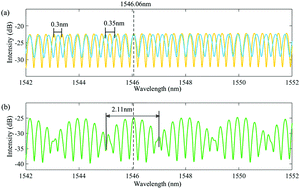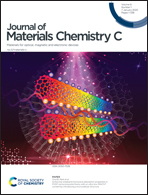A few-layer InSe-based sensitivity-enhanced photothermal fiber sensor
Abstract
Two-dimensional (2D) InSe has recently attracted increasing attention due to its outstanding electrical transport property, excellent photo-response, and direct band gap characteristics. In this contribution, few-layer InSe was successfully fabricated via a facile liquid phase exfoliation (LPE) method. Compared with other 2D materials, the photothermal response measurements demonstrate that InSe has excellent photothermal conversion efficacy. A novel Vernier-cascaded photothermal fiber sensor with high sensitivity that takes advantage of the photothermal effect of few-layer InSe has been proposed and demonstrated for the first time. The experimental results have shown that the photothermal optical sensitivity and spectral shifts of the MZI (Mach–Zehnder interferometer)–MKR (microfiber knot ring) Vernier sensor and the Vernier part are 0.126 nm mW−1, 12.22 nm and 0.0047 nm mW−1, 0.49 nm, respectively. A maximum sensitivity amplification factor of ∼26.8 is realized. Our present work can provide more possibilities of 2D materials that can be utilized towards cascade sensors.

- This article is part of the themed collection: Journal of Materials Chemistry C HOT Papers


 Please wait while we load your content...
Please wait while we load your content...